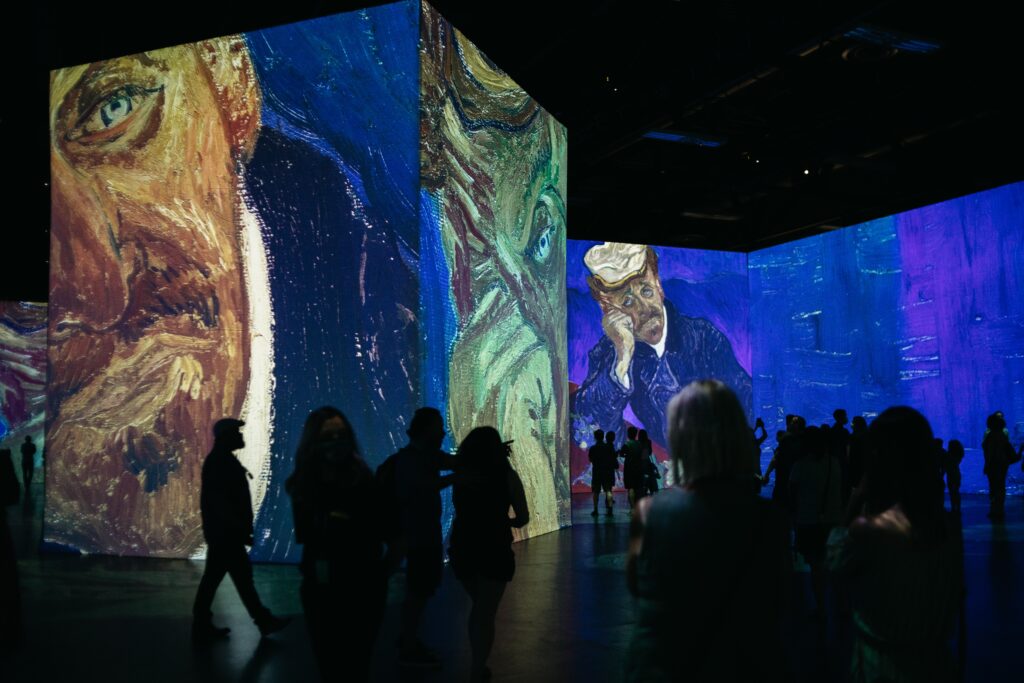C.S. Lewis’ Voyage of the Dawn Treader begins in a painting. In a work of art in a corner room, Lucy, Edmond, and Eustace notice waves begin to move, a ship to sail, and the frame to seem ever more like an open window. There was wind and sound, the “high, steady roar of air and water.” There were smells: “the wild, briny smell, which really convinced Lucy that she was not dreaming.”
A dreamlike step into another world. This, I thought, must be the aspiration of Van Gogh: The Immersive Experience, which I visited two years ago in Atlanta.
Following the success in Paris of Immersive Van Gogh, a number of companies began selling their own “immersive” experiences, in which elements of Van Gogh’s work are projected at large scale on walls, ceiling, and floor. What you purchase is a walk through the art itself. The attractions became wildly popular in 2021, some of which expanded to include the work of Claude Monet, Gustav Klimt, and others.
Despite advertisements showing visitors sitting on the floor or standing captivated beneath elements of the world’s most famous art, in real life I found the picture was a bit more low-res and dizzying, less romantic than overwhelming.
Mine apparently is a representative experience. “Immersive Art Exhibitions Are Everywhere and They’re Awful,” read one recent headline. And just last month, Lighthouse Immersive Inc. — the company that debuted Immersive Van Gogh in Paris — filed for bankruptcy. When the Pevensy children entered another world, they did so “of course by Magic.” You might say the magic of the real-world material, what real hands carefully crafted, is what these immersive experiences are missing.






